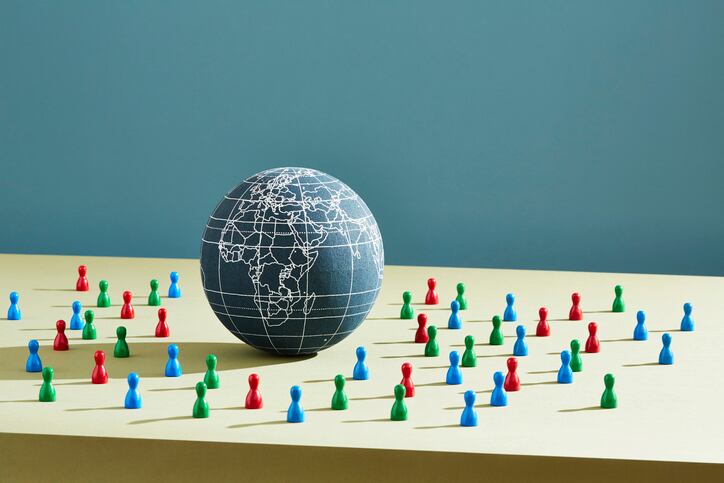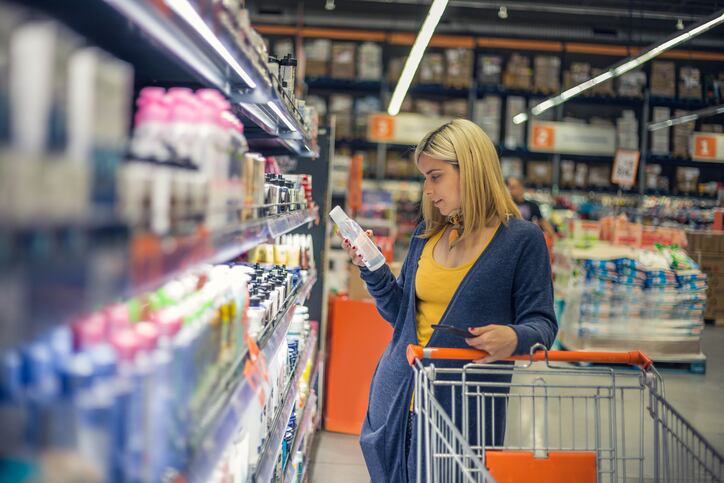In recent years, there had been a raft of industry movements and pledges made around measuring the environmental impact of beauty. In September 2021, a group of leading beauty majors founded the EcoBeautyScore Consortium, designed to establish a brand-agnostic and transparent global environmental impact scoring system. In January 2022, a set of B Corp certified beauty firms created the B Corp Beauty Coalition to drive open sustainable collaboration amongst industry. And in May 2022, Estée Lauder Companies published a method to score ingredients, formulations and products on their green value – following on closely from L’Oréal’s move to launch a sustainability impact score tool for its Garnier brand in France back in June 2020.
Most recently, trade association Cosmetics Europe unveiled its 'Commit for Our Planet' eco initiative last week, designed to spearhead collaborative action across beauty's entire supply chain in Europe to reduce carbon footprints, protect biodiversity and advance sustainable packaging efforts.
But how easy was it really to measure the environmental impact of beauty? And did this need to be done case-by-case or collaboratively? A dedicated panel discussed these ideas at this year’s Sustainable Cosmetics Summit in Paris, last month.
‘It’s not just about measuring impact’
Shaun Russell, chair of the supervisory board at the B Corp Beauty Coalition and founder of Danish B Corp Skandinavisk, said for environmental impact measurements to stay relevant, they had to evolve in real-time and be conducted regularly.
“The world constantly changes, and problems constantly arrive,” Russell said. “It’s not just about measuring impact but investigating and pioneering new ways, as we learn from things we’ve already done.”
Action being led by the likes of B Corp certification, he said, were “starting points” because achieving B Corp status was “tangible, based on data and tough”. And importantly it was a certification that evolved constantly and had to be renewed every three years, he said. So, the more beauty companies that achieved B Corp status, the better, he said.
Laura Schlebes, global sustainable program manager at Sweden-based supplier AAK, said this concept of evolution was critical to creating true change.
“I’m fully aligned that sustainability data is important, to know where we are, but we should not get stuck at the reporting stage,” Schlebes said.
From an ingredient supplier perspective, she said it was about mapping where the volumes were and collating as much “specific information as possible”, with tools around lifecycle analysis critical here. But also then about acting on these findings, she said.
“…For me, it’s about aligning the tools and prioritising where your footprint, volume or profit is and then taking it step by step.”
Environmental, social and governance + consumers
Philippe Guguen, founder and CEO of French digital marketing agency Map Emulsion, said measuring beauty’s impact – no matter where in the supply chain – could be divided into three major categories: environmental, social and governance.
“There are tonnes of things to measure and prove and explain,” Guguen said. And whilst prioritising these would vary depending on geographical regions and each company, he said it was just key all of industry jumped aboard and communicated efforts and advances.
Beauty consumers were ready to understand and learn more about products and the supply chains, he said. “I would say the consumer is ready to play the role (…) If you show them what you do, with evidence (…) the consumer is ready to follow you and read your sincerity.”
In an earlier presentation, the founder and CEO pointed to digital passports as a future means for beauty brands and manufacturers to validate and communicate measurements and efforts, providing full visibility and traceability per product.
Russell agreed, stating in his earlier presentation that a key part to a wider green beauty transition would be engaging with consumers, but importantly seeing them differently – as citizens and not consumers.
Farmer-level support and engagement
Looking ahead, Schlebes said it would also be important to look the other way – upstream in the supply chain to support farmers too should beauty wish to achieve its ambitions and reduction targets.
“That is where the very, very big challenge lies because we are facing sectors that are partly unorganised, made up of thousands, if not millions, of people operating in a certain way, maybe not always living about the poverty line, and they need to change the way of working whilst trying to make a living.”
“…I would like to see us coming together as an industry, on the ground and in farming systems – I would like to see more collaboration there as well,” she said.
It was this collaboration at pre-competitive level, she said, that would be fruitful in advancing industry-wide environmental efforts.
Charmian Love, global director of advocacy at Natura &Co – one of the founding members of the EcoBeauty Consortium, said: “Change is happening right now. We have an incredible privilege to be living and breathing in a moment where what we do really matters.”
Love said if all parts of industry moved to the places where true change could be created and, importantly, did this together, plenty could be achieved. “There are some fabulous collaborations, coalitions, consortiums – find ways to mobilise and create a movement of movements.”
Russell added: “The path to leaving a lighter footprint is foggy and a slow journey, but we ultimately know the things we need to do.”




